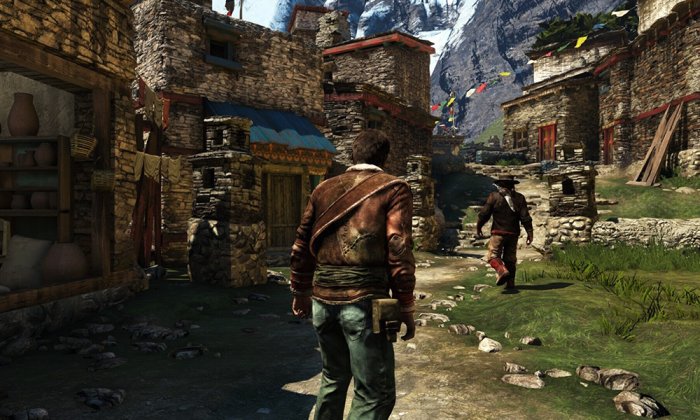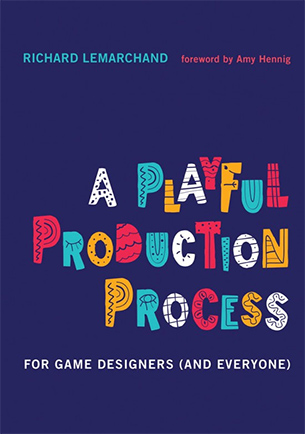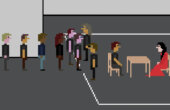My Game Story: Reflections on Design and Storytelling

My game story starts in 1991 in the rural west of England, on the eve of a videogame revolution. I was a 23-year old Oxford graduate with a hard-to-apply Physics & Philosophy degree, a nasty case of undiagnosed situational depression, and an ongoing hunt for meaning in art, including videogames. I couldn’t believe my luck — the rapidly expanding American game publisher MicroProse had a small British studio, where I had won a position as a junior game designer. Despite my lack of professional experience, I discovered that the creative tinkering I’d thought of as play during my childhood and teens counted for a lot, and I threw myself into learning from my brilliant colleagues.

Four years later and I’d pitched up in Palo Alto, now as a prematurely senior game designer at Crystal Dynamics, a studio founded by executives from Sega and Fox TV in the spirit of “Siliwood,” the confluence of Silicon Valley technological chops and Hollywood storytelling. I wanted to make games that told stories, stories that meant something in the way that my favorite stories did — from “Star Wars” to “Do the Right Thing,“ “Watchmen” to “Sexing the Cherry.” Game console storage space had just exploded in size, and now we had room for the audio and video files that were making radically new things possible in game storytelling. I was working on “Gex,” a series about a wisecracking gecko trapped in TV land, collecting remotes and 1-UPs. I loved “Gex” for the wall-sticking gameplay and dad jokes, but I wanted to do more. Then I met Amy Hennig, the game director, who introduced me to “The Writer’s Journey,” Christopher Vogler’s famous screenwriting manual that brought Joseph Campbell’s anthropological ideas about the “hero’s journey” to Hollywood. The hero’s journey, or monomyth, is the universal story, archetypes, and values that Campbell (building on Jung) saw beneath mythological systems from around the world.
In artless hands, the hero’s journey often results in formulaic stories that value the acts of individuals over those of collectives or communities.
Videogames have often struggled with story. Both game developers and scholars of game studies have argued vehemently about the role of narrative in games, some claiming that it’s irrelevant or a distraction, while others see the promise of richly interactive and immersive storytelling spaces. For me, everything in every art form can be seen as narrative, because the mind is a narrativizing mechanism, and my whole career has been built on tackling the challenge that game developers and game writers face when they try to put games and story together in a way that really works. In many videogames, the player is embodied in a player-character, and is transported to a fantastical world of mystery and surprise. Together they cross thresholds, get trained up in new skills by mentors, defeat enemies, and complete tasks, progressing towards ultimate victory and savior status. This all maps very neatly onto the hero’s journey, and so perhaps it’s natural that we game developers gravitate towards the monomyth as we begin to learn about storytelling.
Of course, there’s a big problem with a storytelling model that revolves around brave boys traveling to far-off lands to seize treasures and bring prosperity home: It’s easy to identify the hero’s journey as colonialist and patriarchal. (The same goes for certain game genres, such as the “4X” strategy game style, with its grisly four Xs of “explore, expand, exploit, and exterminate.”) Another issue is that, in artless hands, the hero’s journey often results in formulaic stories that value the acts of individuals over those of collectives or communities. But Campbell and Vogler got me thinking, and set me on my own quest to learn more about what we now call story structure, looking out for patterns that would help game designers make storytelling games where the gameplay and story work nicely together, instead of pulling apart at the seams. I have a pretty analytical brain, and while stories had always just washed over me, weaving their magic spells of emotion and interest, I was starting to understand what was going on under the hood of the stories I loved, and to realize that maybe by reverse-engineering them, we could find out what storytelling techniques would work in a videogame.
Amy Hennig and I worked together for about 13 years, first on the cult classic “Gnostic horror” game series “Soul Reaver” at Crystal Dynamics, and then at Naughty Dog, a studio in Sony’s videogames division, where our team created the world of “Uncharted” (you might have seen the recent “Uncharted” movie featuring Tom Holland as treasure hunter Nathan Drake). We continued our studies in story structure at Naughty Dog, using other screenwriting books like Blake Snyder’s “Save the Cat” and Robert McKee’s “Story.” Both these books had an influence on “Uncharted,” as we learned how to introduce likable, interesting characters, orient them to their goals and the obstacles in their path, and then show them growing as people through the ensuing struggle. For example, McKee talks about “the gap,” the differential between what a protagonist expects will happen when they take an action to achieve a goal, and the actual outcome that results. “Story” and “Save the Cat” aren’t perfect, but they’re useful to storytellers who are learning the ropes, and very useful for storytellers in nonlinear fields — like game design — who are trying to pick apart story and put it back together for an interactive context.
In my book “A Playful Production Process: For Game Designers (and Everyone),” I talk about “story structure for game designers,” laying out some ideas about three-act Aristotelian dramatics and Freytag’s famous pyramid, both of which have a tidy “beginning-middle-end” structure of set-up, development, and resolution. This helps game developers see the same rising and falling patterns of intensity in stories that they see in the games they make, as players vie against each other, or against the system of the game, to achieve their goals and win. Peaks of intensity in gameplay and story can sometimes work with each other to create wonderful moments in a synergetic way, but at other times they might cancel each other out.
For example, in the “Uncharted” games we made sure to alternate sequences of intense popcorn-movie action gameplay with quieter spaces of exploration and reflection — something radical for the time, in big-budget games — to give the emotion in the story space to breathe. I was part of a group that created the “peaceful village” sequence in “Uncharted 2: Among Thieves,” where the combat systems of the game are turned off, and Drake strolls through a Himalayan village on a sunny morning, visiting with kindly people with whom he shares no common language. This was deemed a risky game design choice in 2009, and we were delighted by the wildly positive responses it prompted from critics and fans alike.
In the “Uncharted” games we made sure to alternate sequences of intense popcorn-movie action gameplay with quieter spaces of exploration and reflection.
There is also “sequence structure,” a storytelling model proposed by Frank Daniel, the Czech-American screenwriter, film director, and sometime dean of the USC School of Cinematic Arts. For Daniel, the three or five acts of a story can each be regarded as a standalone tale, and each act can be broken down further into sequences, which can also be seen as miniature stories, one leading into the next. This led me to an idea from Melanie Anne Phillips and Chris Huntley of “Dramatica” fame, who tell us that stories are fractal — as acts are made up of sequences, sequences are made up of scenes, and further down into individual “beats,” where a joke is told, a fierce glare is shot across a room, or a tender moment is shared.
This transformed my thinking about both storytelling and games, which I now see as modular, interlocking, overlapping patterns of beginning-middle-end, repeated with variation to create endlessly fascinating situations. If we can identify each beginning-middle-end in a sequence of gameplay or a fragment of story, we can be deliberate about the way we collage them together to create thrilling and moving effects for our audience of players. One good example of this is the way that, at the height of an intense and action-packed lightsaber battle, one D. Vader drops a key piece of family information for his adversary, turning the climax of a swordfight into an unforgettable moment of cinematic history. If you’re a fan of “Uncharted 2,” you might remember the betrayals in that game, which play a similar role in twisting the story towards unexpected and exciting new directions.
Game players are very goal-oriented, just like the characters in stories, and if we can hold the tension between what the player-character (the hero or avatar in the game) wants inside the story world of the game, and what the player is going for at any given moment, then we’re on a good design track. It’s my belief that superior game stories are those where the cares and goals of the player-character are aligned with the player’s own cares and goals, a place where game design, narrative design, player psychology, and even the cultural, social, or political context of the game are braided together.
Maybe thanks to my deep dives into art, culture, and design, my situational depression improved over time. I’ve always taken solace in art, and I found a lot of the meaning I was looking for, everywhere from art museums to the progressive, emotional accomplishments of indie game designers. But moreso, I found meaning in artmaking, in the craft of game design and development, collaborating with extraordinarily talented people to push out the bounds of what was possible in storytelling games. Hopefully, introducing a healthier game development process to the next generation can help sow a few more seeds of change.
Richard Lemarchand, a game designer who worked in the videogame industry for more than 20 years, is Associate Professor in the USC Games program at the University of Southern California. Among many other projects, he led or co-led the design of all three games in the PlayStation 3 Uncharted series, including the award-winning “Uncharted 2: Among Thieves.” He is the author of “A Playful Production Process: For Game Designers (And Everyone).”



